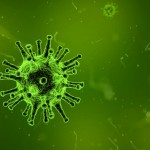Endometriosis
Endometriosis is the abnormal growth of cells (endometrial cells) similar to those that form the inside of the uterus, but in a location outside of the uterus. It can grow in the fallopian tubes, ovaries, bladder, bowel, vagina or rectum.
The uterine cavity is lined with endometrial cells, which are under the influence of female hormones. Endometrial-like cells in areas outside the uterus (endometriosis) are influenced by hormonal changes and respond in a way that is similar to the cells found inside the uterus. Symptoms often worsen with the menstrual cycle. This “misplaced” tissue can cause pain, infertility, and very heavy periods. The pain is usually in the abdomen, lower back or pelvic areas. There is no cure for endometriosis, but it can be treated in a variety of ways, including pain medication, hormonal treatments, and surgery.
Symptoms
A major symptom of endometriosis is recurring pelvic pain:
The pain can range from mild to severe cramping that occurs on both sides of the pelvis, in the lower back and rectal area, and pain may even occur during or after sex (dyspareunia)
Intestinal pain
Painful bowel movements or painful urination during menstrual periods
Bleeding between menstrual periods
Infertility
Fatigue
Diarrhea, constipation or nausea, especially during menstrual periods
Causes
Retrograde Menstruation: The theory of retrograde menstruation (also called the implantation theory or transplantation theory) is the most widely accepted theory for the formation of ectopic endometrium in endometriosis . It proposes that during a woman's menstrual flow, some of the endometrial debris exits the uterus through the fallopian tubes and attaches itself to the peritoneal surface (the lining of the abdominal cavity) where it can proceed to invade the tissue as endometriosis.
Environmental factors: Another reason for endometriosis is certain toxins in the environment, such as dioxins (chemical byproducts), affecting the body and its immune system.
Congenital factors: Endometriosis is sometimes believed to be heritable i.e. being passed down through the genes of family members. It is more common in asian women than in caucasian women. This phenomenon suggests that genes may also play a part.
It can also spread through the bloodstream or lymphatic system: Endometriosis cells are believed to get into the bloodstream or lymphatic system (a network of tubes, glands and organs that is part of the body's defense against infection). This theory could explain how, in very rare cases, the cells are found in remote places such as the eyes or brain.
Diagnosis
A medical history and a physical examination can in many patients lead the physician to suspect endometriosis .
Laparoscopy: A surgical procedure where a camera is used to look inside the abdominal cavity, is the gold standard in diagnosis, although it is largely obsolete in most gynecology practices due to its invasive nature.
Ultrasound: Physician can perform an ultrasound, an imaging test to see if there are ovarian cysts from endometriosis.
During a vaginal ultrasound, the doctor will insert a wand-shaped scanner into vagina.
During an ultrasound of pelvis, a scanner is moved across the abdomen.
Both tests use sound waves to make pictures of your reproductive organs.
Magnetic resonance imaging (MRI): is another common imaging test that can produce a picture of the inside of the body.
NHP provides indicative information for better understanding of health. For any treatment and diagnosis purpose you should consult your physician.
Treatments
While there is no cure for endometriosis, management can be done to ease the symptoms:
Pain medication: For some women with mild symptoms, doctors may suggest taking over-the-counter medicines for pain. These include ibuprofen (Advil and Motrin) or naproxen (Aleve). When these medicines don't help, doctors may prescribe stronger pain relievers.
Hormonal treatment: When pain medicine is not enough, doctors often recommend hormonal medicines to treat endometriosis. Only women who do not wish to become pregnant can use these drugs. Hormones come in many forms including pills, shots like: Progestins Danazol.
Surgerical treatment: Surgery is generally considered as best choice for women with severe endometriosis. Your doctor might suggest one of the following:
Laparoscopy is used to diagnose and treat endometriosis. During this surgery, doctor remove growths and scar tissue or burn it. The aim is to treat the endometriosis without damaging the healthy tissue around it.
Laparotomy is a major abdominal surgery that involves a much larger cut in the abdomen than with laparoscopy. This allows the doctor to reach and remove growths of endometriosis in the pelvis or abdomen.
Hysterectomy is a surgery in which the doctor removes the uterus. Sometime doctor may remove the ovaries as well to ensure that endometriosis will not return. This is done when the endometriosis has severely damaged other organs. A woman cannot get pregnant after this surgery, so it should only be considered as a last resort.
For further queries please consult your doctor.
Complications
The main complication of endometriosis is:
Difficulty in getting pregnant (subfertility) not being able to get pregnant at all (infertility).
In some cases there may also be adhesions or ovarian cysts.
References:
NHS
U S National Library of Science









